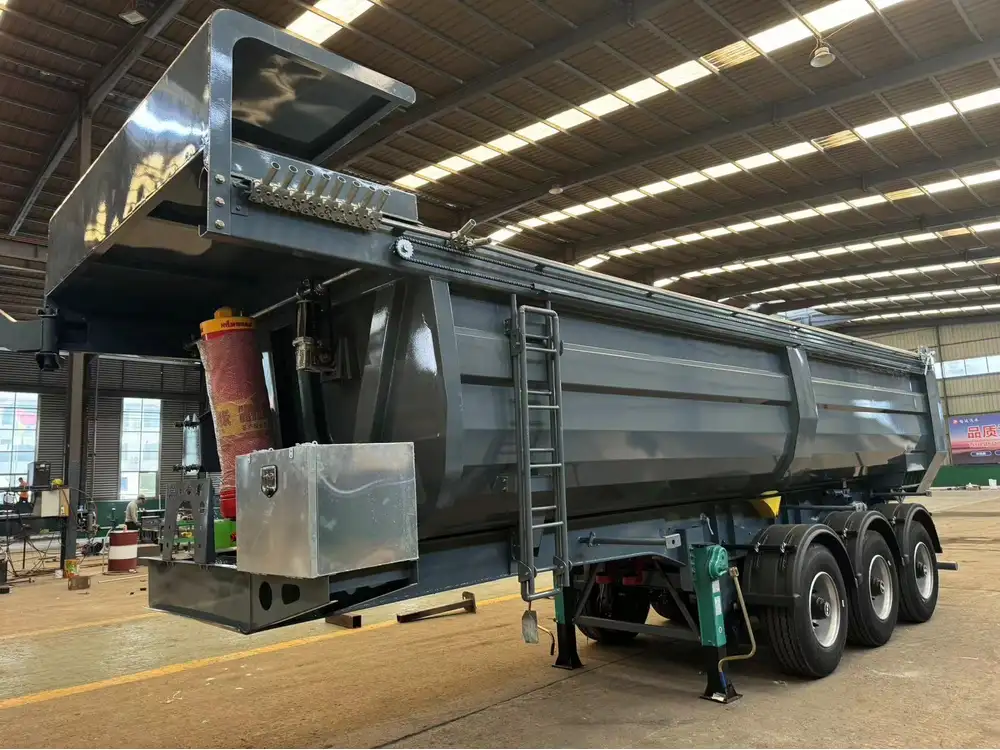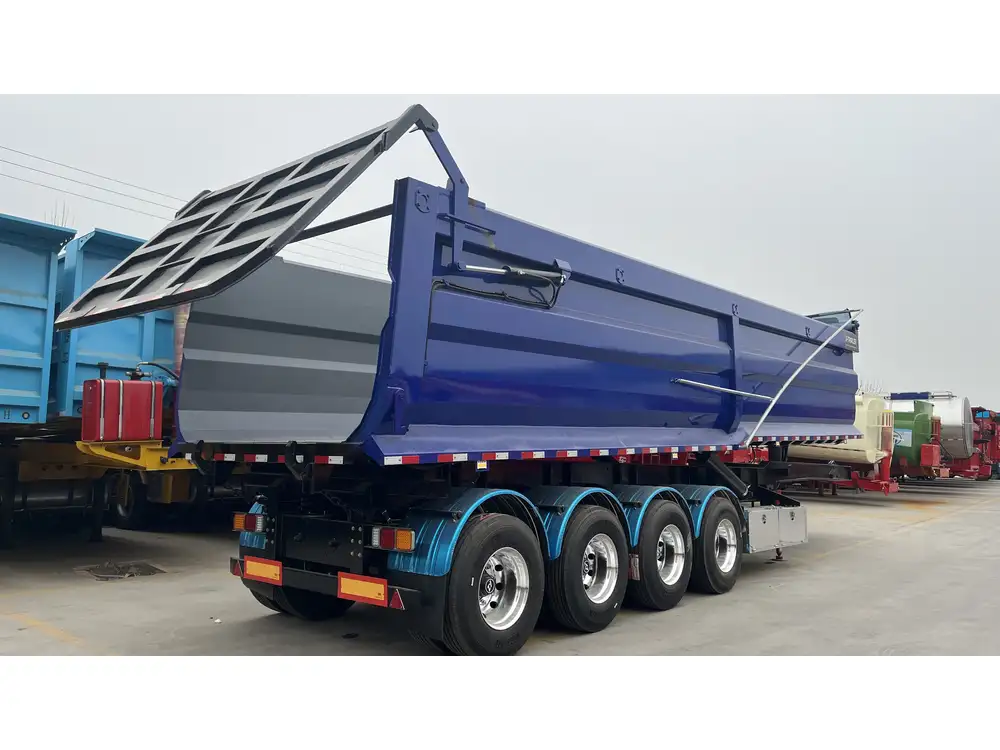In the realm of transportation, particularly within the freight and logistics industry, understanding the dimensions of semi-trucks is crucial. This article delves into the specific width of semi-trucks, providing essential insights that cater to manufacturers, truck drivers, transportation companies, and logistics experts. We aim to cover this topic in great detail, offering relevant information that ensures your knowledge is both extensive and applicable.
What Constitutes the Width of a Semi Truck?
The width of a semi-truck is often a point of confusion due to variations in design and regulation. Generally, in North America, the standard width for a semi-truck measures 8.5 feet (102 inches). This measurement pertains to the entire truck’s outermost portion, which includes the tractor and trailer. However, certain factors can influence this figure, including:
- Regulatory Standards: Different jurisdictions may have unique regulations affecting the maximum allowable width.
- Trailer Types: Flatbeds, enclosed trailers, and other specialized equipment may have specific width dimensions.
- Load Regulations: When transporting oversized loads, width allowances can change significantly.
Understanding these variables plays a pivotal role in compliance and safe transportation operations.
Table 1: Standard Semi Truck Dimensions
| Component | Dimension |
|---|---|
| Width of Truck | 8.5 feet (102 inches) |
| Length of Truck | Typically 48 to 53 feet |
| Height of Truck | Generally around 13.5 feet |

Impact of Truck Width on Regulations and Safety
Federal and State Regulations
The regulations surrounding truck width can have a direct impact on transportation. The Federal Highway Administration (FHWA) regulates the width, but individual states can impose their limits as well. Understanding these regulations is essential for ensuring compliance and avoiding fines. States like Texas, for example, allow for wider loads under specific conditions, while others maintain stricter limits.
Key Points:
- Interstate vs. Local Roads: Generally, the maximum width on interstates may differ from local roads where restrictions are more stringent.
- Permit Requirements: Depending on the width, you may need special permits to operate a semi-truck on certain routes.

Safety Considerations
The width of a semi-truck directly influences its handling, braking distance, and overall safety during operation. Wider trucks have a larger turning radius and may present challenges in tight spaces. This is especially important in urban settings or confined areas where navigating can become precarious.
- Turning Radius: Wider trucks require more space to turn, affecting the decision-making of truck drivers when navigating intersections or tight corners.
- Stability: Wider trucks may have better lateral stability, but overloading can lead to hazards such as rollovers or swaying.
Measuring Truck Width: Best Practices
Knowing how to accurately measure the width of a semi-truck is an essential skill for operators, manufacturers, and industry professionals. Here’s a structured approach to this process:
Step-by-Step Measurement
- Gather Necessary Tools: Use a measuring tape that extends to at least 10 feet.
- Find a Level Surface: Position the truck on a flat area to ensure an accurate reading.
- Measure from Outer Edge to Edge: Start at one outermost edge of the side mirror, including any protruding elements, and extend the tape to the other side.
- Document Any Variations: Note whether the width changes according to load or trailer type.

Perceived Width: The Optical Illusion
Interestingly, the perceived width of a semi-truck can differ based on surrounding elements, such as lane markings or road signage. This phenomenon can lead to misestimations, particularly for new drivers. Adequate training and experience can help mitigate this issue.
Understanding Different Trailer Widths
Not all trailers match the standard semi-truck width. It’s critical to recognize the variations among commonly used trailer types, affecting overall width and operation.
Types of Trailers and Their Dimensions
- Flatbed Trailers: Typically align with the standard width of 8.5 feet, allowing for easy loading and unloading.
- Enclosed Trailers: May also adhere to the standard dimensions but might have variations depending on design.
- Specialized Trailers: This category includes extendable, lowboy, or double-drop trailers, which can often exceed the standard width when loaded.
| Trailer Type | Typical Width |
|---|---|
| Flatbed | 8.5 feet (102 inches) |
| Enclosed | 8.5 feet (102 inches) |
| Lowboy | Varies, typically 8-10 feet |
| Double-Drop | Varies, typically up to 8.6 feet |

Oversized Loads: A Special Case
When it comes to transporting oversized loads, width regulations become even more complex. Loads exceeding the standard width often require:
- Permits: Special permits that allow transportation beyond regulated limits.
- Pilot Cars: Escort vehicles that help navigate.
- Route Planning: Strategic planning to avoid low bridges, narrow roads, and specific restrictions.
The Role of Width in Truck Design
Engineering and Design Considerations
The width of a semi-truck is not just a regulatory matter; it involves engineering intricacies that influence performance, aerodynamics, and loading capabilities.

Aerodynamics
Wider trucks present a larger surface area that can impact fuel efficiency due to increased air resistance. Manufacturers continuously innovate designs that balance compliance with operational efficiencies, such as:
- Streamlined Designs: Incorporating curved edges and specialty materials to reduce drag.
- Weight Distribution: Strategic placement of cargo helps in maintaining stability despite external width measurements.
Impact on Load Capacity
The width directly correlates with the load capacity of a trailer. As width increases, so does the potential for a broader load, allowing companies to transport more goods efficiently.
| Factor | Impact on Operation |
|---|---|
| Increased Width | More space for cargo, possible overweight |
| Safety Regulations | May require additional permits |
| Performance | Can influence handling characteristics |
Future Trends: Width Innovations
With the rise of electric trucks and advancements in materials, semi-truck designs are continuously evolving. Innovations may include:
- Adaptive Width Designs: Future trucks may hit the market with adjustable dimensions to comply with varied regulations.
- High-Tech Safety Features: Sensors will play a critical role in monitoring the width during transport, ensuring equipment adherence to safety standards.

Conclusion
The width of a semi truck plays an integral role in logistics, regulations, and the safety of operations. Understanding these dimensions not only enhances compliance but also improves transportation efficiency. As the industry continues to evolve, staying informed about upcoming changes and innovative designs will position businesses ahead of their competition. By grasping the intricacies of semi-truck width and its implications, stakeholders can make informed decisions, ensuring a smooth and compliant operational flow.
In summary, the standard width of semi-trucks set at 8.5 feet is just one part of the mosaic that constitutes effective freight transportation—one that must reflect regulatory insight, engineering excellence, and practical safety measures.



